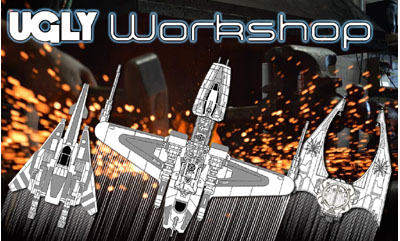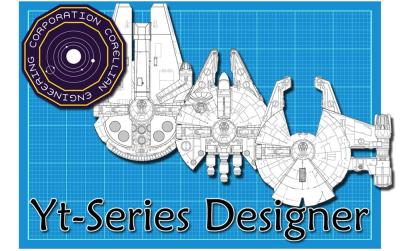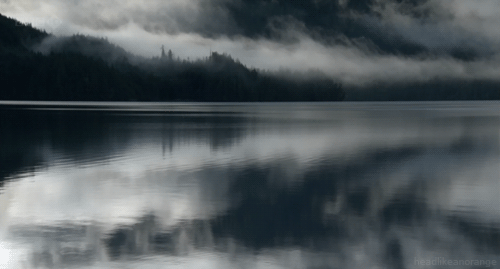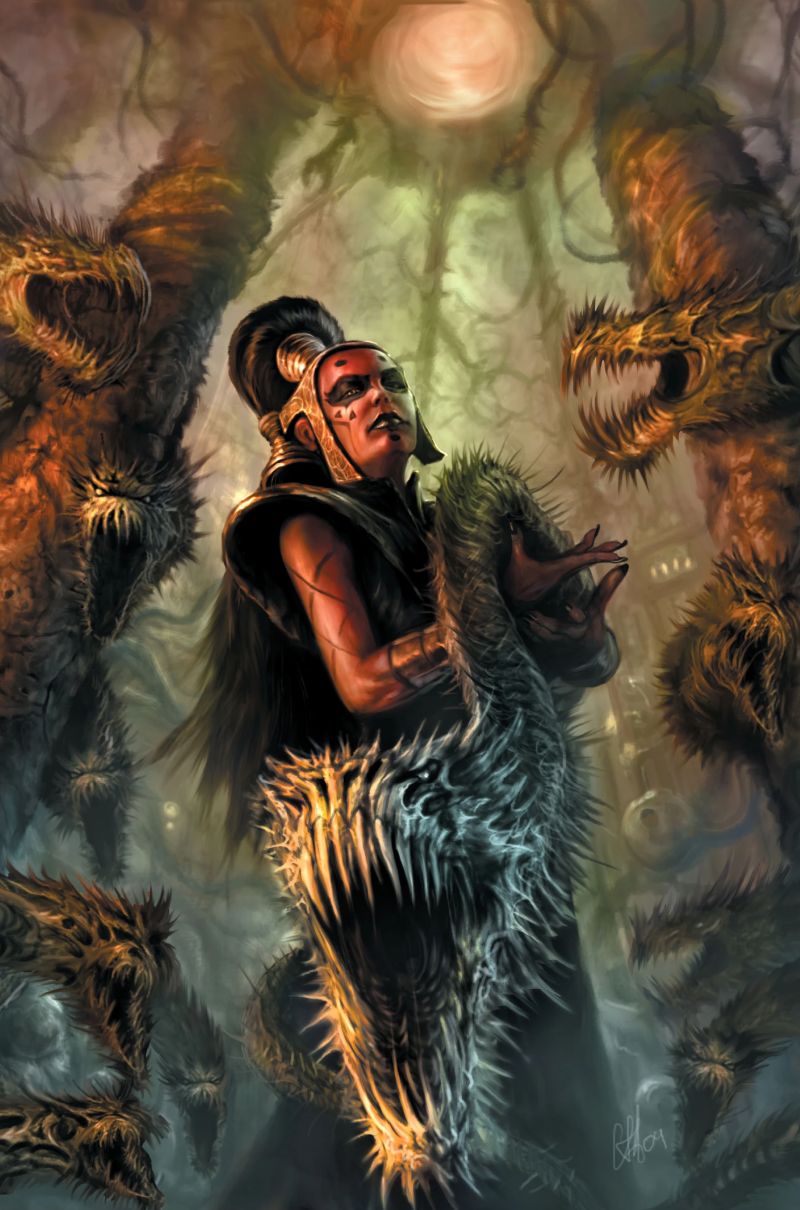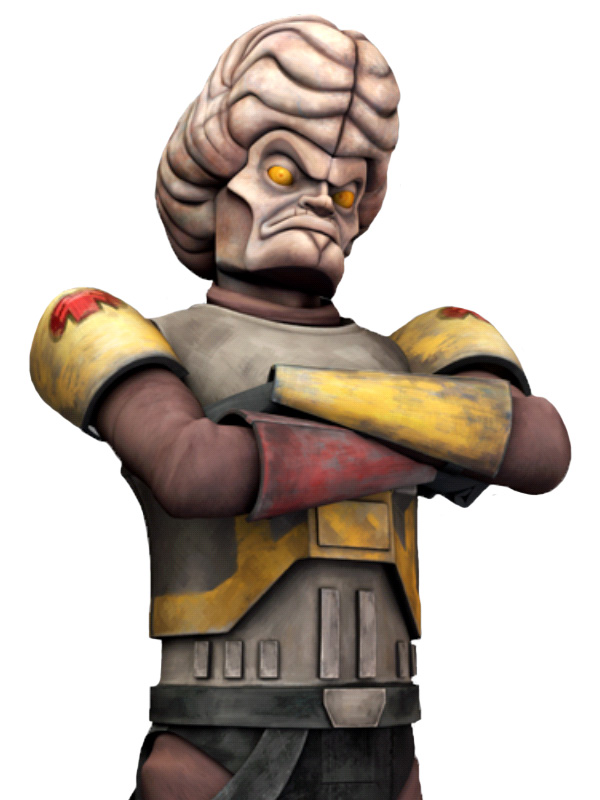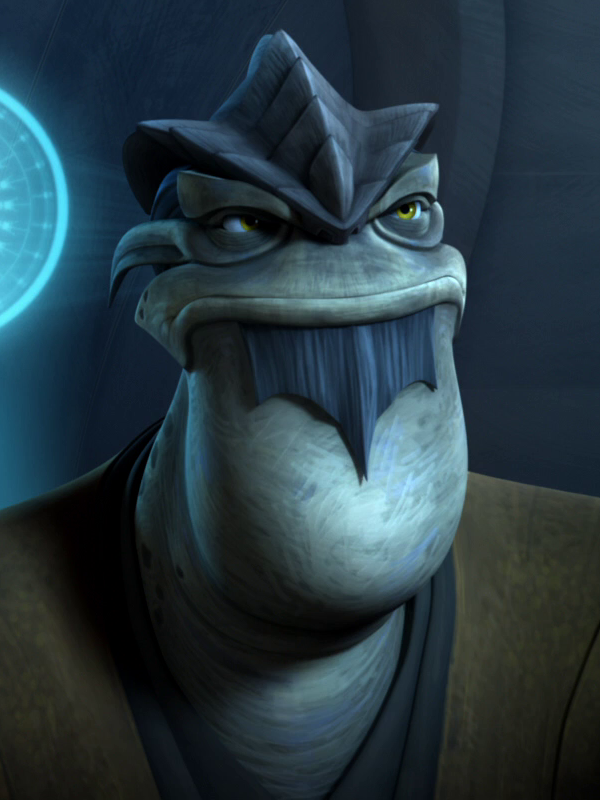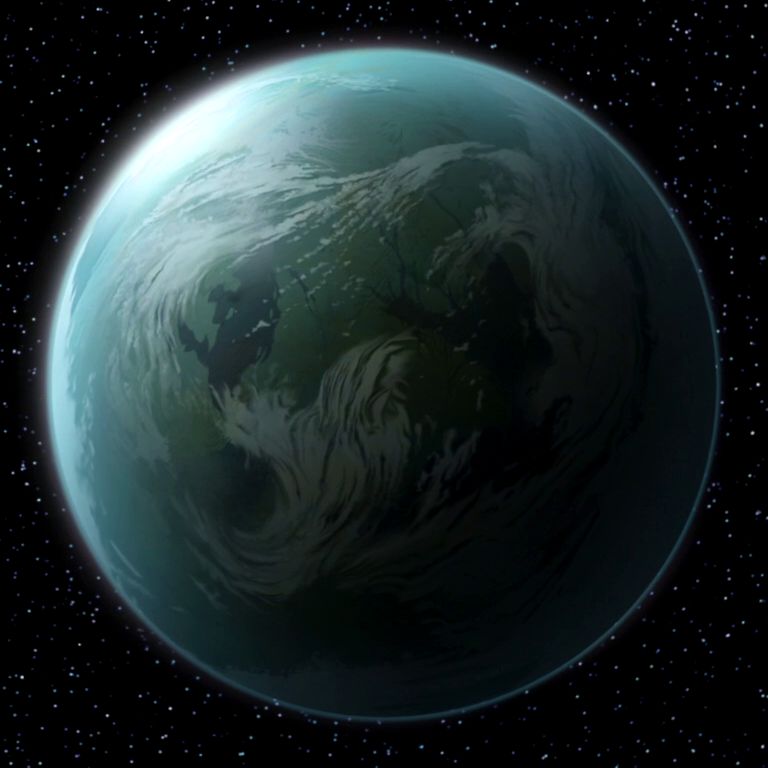 Name: Naboo
Region: Mid Rim
Sector: Chommell sector
System: Naboo system
Suns: 1: Naboo
Orbital position: 3
Moons: 3 {Ohma-D'un, Onoam, Veruna}
Grid coordinates: O-17
Trade routes: Enarc Run, Old Trade Federation Route
Rotation period: 26 standard hours
Orbital period: 312 standard days
Class: Terrestrial
Diameter: 12,120 kilometers (7,531 miles)
Atmosphere: Breathable
Climate: Temperate
Primary terrain: Swamps, Hills, Plains, Cities, Mountains
Points of interest: Gallo Mountains, Gungan Sentry Post, Hiram Zataire's vineyard, Kwilaan Spaceport, Lake Country, Lake Paonga, Solleu River, Theed Royal Palace, Varykino
Flora: Cambylictus tree, Locap, Millaflower, Naboo lettuce, Perlote tree
Fauna: Bee, Blarth, Bogwing, Colo claw fish, Doo, Faa, Falumpaset, Fambaa, Golden pheasant, Gualama, Guarlara, Ikopi, Kaadu, Laa, Mee, Mott, Nuna, Odupiendo, Ollopom, Opee sea killer, Peko-peko, Pelikki, Pikobi, Ray, Sando aqua monster, See, Soo, Shaak, Slitherfish, Slug-beetle, Tee, Tusk-cat, Veermok, Yobshrimp
Native species: Gungans
Immigrated species: Elders, Humans, Naboo
Primary language(s): Galactic Basic
Government: Elective monarchy
Population: 4.5 billion: 72% Gungan, 27% Human, 1% Other
Demonym: Nabooian
Major cities: Dee'ja Peak, Jan-gwa city, Keren, Moenia, Otoh Gunga (Gungan capital), Otoh Langua, Theed (human capital)
Major imports: Grain, Ore, Processed foods, Technology, Silk
Major exports: Gungan stew, Art, Cultural items, Grain, Plasma, Wine
Description: Naboo was a bountiful planet in the Chommell sector of the Mid Rim, close to the border of the Outer Rim Territories. It was home to the Gungan species and to a population of humans known as the Naboo. Naboo was pushed to the forefront of galactic politics as the birthplace of the Dark Lord of the Sith Sheev Palpatine, who served as its representative in the Senate of the Galactic Republic.
Under the guise of his Sith title Darth Sidious, Palpatine secretly engineered an invasion of his peaceful homeworld by the Trade Federation in a bid for power. Ostensibly done in protest over proposed taxation of formerly free trade routes, the Federation's invasion led to an outpouring of support from the Senate for both Palpatine and the newly-elected Queen of Naboo, Padmé Amidala. Amidala led a successful resistance movement and removed the Federation from her world during the Battle of Naboo. Palpatine subsequently rose to the office of the Supreme Chancellor of the Republic, with Amidala eventually taking his place as the planet's senatorial representative.
Naboo would commit itself firmly to democracy in the intervening years, staying loyal to the Republic during the pan-galactic Clone Wars, which saw several military engagements against the Confederacy of Independent Systems come to the planet. By the time of the war's end, Palpatine had amassed considerable power and proclaimed himself the head of a new Galactic Empire. Palpatine's reign would eventually be ended by the Alliance to Restore the Republic, a rebel movement led by Amidala's children, Leia Organa and Luke Skywalker.
Despite his origins on the planet, Palpatine did not care at all for his homeworld and, following his death, Naboo was named a priority target for Operation: Cinder, a protocol that the Sith Lord had put in place to destroy Imperial worlds should they fail to protect their Emperor. Through the intervention of Organa and Queen Sosha Soruna, however, Naboo was spared from ruin and went on to become a member of the successor state to the Alliance, the New Republic. Decades later, the planet would again fight against tyranny, rising up against the military junta of the First Order during its war with Organa's Resistance.
Description
Naboo was a small pastoral world in the Mid Rim, located near the border of the Outer Rim Territories. Unlike most other worlds, the ancient planet lacked a molten core, and instead comprised a conglomerate of large, rocky bodies that made up a network of tunnels and flooded caves. The native Gungans, who built their homes in the waters of Naboo, rarely ventured into the core, fearing the ravenous sea beasts which resided in areas such as the Caves of Eleuabad. Despite this, certain Gungan navigators utilized time-honored trade routes through the planet's structure, which served as the most expedient avenues to reach other areas of the planet. Naboo's interior was rich with plasma, a naturally-occurring energy unique to the planet, and this coupled with its lack of molten core gave Naboo a reputation as an enigma to astrophysicists, who regarded the world's structure as an extremely rare phenomenon in the galaxy.
Naboo's surface comprised a vast array of different landscapes, from rolling plains and grassy hills to swampy lakes caused by the water-filled network of deep-sea tunnels. The swamps acted as a gateway to the world's seas, where legendary creatures dwelt. Beside its natural features, Naboo was considered a world of classical beauty due to the aesthetics of its population centers. The porous crust's natural plasma was harvested for energy and building material, and was generally thought to be the key to many of the planet's secrets.
While most of Naboo's land animals were peaceful, as exemplified by the gentle shaak, the planet's oceans, which held an abundance of life, teemed with menacing creatures, such as the opee sea killer and the sando aqua monster.
History
Early history
Originally, Naboo was home to the amphibian Gungans. The earliest offworlders to arrive were a Reptilian species known as the Elders who warred against the Gungans. Eventually, the Elders vanished as mysteriously as they arrived, leaving only stone statues behind. For thousands of years afterward the Gungans flourished until a group of human colonists from Grizmallt crash-landed on Naboo. Initially, the Gungans retreated underwater and avoided the colonists. When the Gungans finally met the colonists, diplomacy failed and the two species fought a series of wars over territory and resources before largely resolving to live apart and ignore each other. A series of internal wars amongst the Gungan tribes and the human city-states eventually ended with both factions being unified in their own way but still separate nonetheless.
Led by Kwilaan, the colonists ventured into the Gallo Mountains, created a farming community at the Dee'ja peak, establishing their presence on the planet and eventually taking its name for themselves. The Naboo calendar based its epoch around the arrival of Kwilaan. Tensions arose between the two peoples, and they started separate and apart from that point on.
In 867 BBY, Naboo joined the Galactic Republic, the democratic union that sought to govern the galaxy. The people of Naboo celebrated this event during the Festival of Light.
Invasion of Naboo
About ten years before the Clone Wars, Naboo was blockaded and invaded by the Trade Federation. The 14-year-old Padmé Amidala, who had recently been elected Queen of Naboo, guided her home planet through the invasion and sealed a new friendship with the Gungans. In an upsurge of sympathy and solidarity toward the invaded planet, the queen's emissary in the Galactic Senate, the seemingly unassuming Senator Sheev Palpatine, was made Supreme Chancellor of the Republic.
Naboo recovered quickly from the invasion under Amidala's remaining years, managing to almost completely restore its harvests and crop yields by the end of her final term. One of Amidala's final projects, which continued under the reign of her successor, was the implementation of an ion pulse in Theed in case of future invasions. The decision to install the pulse, whilst meeting with general approval, was nevertheless controversial as some, such as Quarsh Panaka, favored the idea of more robust and extensive defenses whilst others felt that installing any weapon system was against everything Naboo stood for in terms of peace.
The Clone Wars
Both the Naboo and the Gungans remained loyal to the Republic during the Clone Wars, though many on Naboo were in despair at the idea of a galaxy-wide war. Senator Padmé Amidala and Representative Jar Jar Binks worked together to represent the interests of the Naboo and Gungans respectively in the Galactic Senate. During the Clone Wars, Neeyutnee served as Queen of Naboo. Amidala and Binks, with the help of the Jedi Order and the Gungan Peppi Bow, discovered the Separatist scientist Nuvo Vindi's secret laboratory in the Eastern swamps. They managed to prevent Vindi from releasing stockpiles of the Blue Shadow Virus into Naboo's surface.
During the Battle of Mon Cala, elements of the Gungan Grand Army led by Representative Binks were dispatched to the watery planet of Mon Cala to aid Senator Amidala, the Jedi, the Clone SCUBA troopers, and the Mon Calamari Prince Lee-Char's forces against the Separatist commander Riff Tamson and his Quarren allies.
Later, the Gungan Boss Lyonie came under the influence of the pro-Separatist minister Rish Loo. Under Loo's control, Lyonie ordered the Gungan Grand Army to march on the Naboo capital of Theed. Their plan was to rendezvous with a Separatist droid army led by General Grievous, who had been sent by Count Dooku himself. Rish Loo and Dooku's plot was foiled by the combined efforts of Senator Amidala, Representative Binks, the Jedi Knight Anakin Skywalker, and General Roos Tarpals. However, the Naboo and Gungans were forced to release Grievous after Dooku took Skywalker hostage.
During the Festival of Light, Dooku sent Cad Bane and his team of bounty hunters to kidnap Palpatine in order to free Separatist prisoners from Republic captivity. At first, Bane and Moralo Eval were successful in capturing Palpatine. However, they were stopped by one of their fellow bounty hunters, Rako Hardeen, who was really Obi-Wan Kenobi in disguise. But, Bane planned a diversion in order to lure the Republic forces away while Dooku carried out the kidnapping. This failed, however, when he fought Kenobi and Skywalker.
The Dark Times
Shortly after the end of the Clone Wars, thousands of citizens gathered in the streets of Theed in order to assist to Amidala's funeral procession.
Following the rise of the Galactic Empire and Palpatine's self-proclamation as Emperor, Naboo hosted one of the new regime's military garrisons.
Due to its status as Palpatine's homeworld, Naboo prospered during the Age of the Empire. Its economy and environment were regarded to be far healthier than most worlds which had been subject to Imperial rule. The Empire also demilitarized Naboo and dissolved the Royal Naboo Security Forces's starfighter wing. As a result, Naboo lacked any combat-trained pilots by the time of the Battle of Endor.
Naboo's internal politics were also interfered with by the new regime; while the people were still permitted to elect their monarchs, those who gained the office had little real power or influence. Instead, all major decisions regarding Naboo were placed firmly in the hands of the sector's Moff, a position held by former Security Forces officer Quarsh Panaka during the early days of the Empire. Though one of the less corrupt Imperial officials, Panaka was assassinated by Saw Gerrera's Partisans insurgency in 3 BBY.
Era of the New Republic
When news of Emperor Palpatine's death had spread across the galaxy after the Battle of Endor, an outpouring of joy occurred on Naboo, the inhabitants of which considered themselves free at last.
Some twenty days after the Battle of Endorââ¬âwhich resulted in the defeat of the Empire by the Alliance to Restore the Republicââ¬âthe Royal House of Naboo received a visit by Princess Leia Organa of Alderaan, who had been sent by Mon Mothma, Chancellor of the Alliance. In the royal palace's throne room, Organa met the then-Queen of Naboo, Sosha Soruna, and asked for Naboo's support in the establishment of a New Republic and the restoration of the Senate. The queen heartily accepted Organa's offer, claiming that the Naboo felt great shame over Palpatine's actions.
During the meeting, gigantic storms suddenly began to rage, and Naboo's orbital sensors were all jammed. The Empire had set up a climate disruption array in orbit, as ordered by the late Emperor Palpatine. Named Operation: Cinder, the Empire's plan was to disrupt Naboo's environment and climate, and thus render the planet inhospitable. The storms caused fires and flooding across the world, and many buildings were demolished. Soruna, Organa, and Alliance pilot Shara Bey finally decided to use three old N-1 starfightersââ¬âthat had been stored by Queen Neeyutnee in the Theed Hangar during the Clone Warsââ¬âand go protect Naboo by destroying the Empire's satellites. Once in space, the three women were attacked by a squadron of TIE fighters, but managed, nonetheless, to knock out all of the satellites. A Rebel fleet led by Lando Calrissian and Nien Nunb soon arrived to take care of the Imperial forces. The fleet consisted of members of Danger Squadron, which arrived in T-65B X-wing starfighters led by Danger Leader Duros Shriv Suurgav, Nunb in the Mellcrawler II, and the MC80 Star Cruiser Restoration.
Danger Squadron temporarily included former Inferno Squad members and recent Imperial defectors Iden Versio and Del Meeko to assist the three women in the destruction of the satellites. After their destruction, the Imperial II-class Star Destroyer Torment was then engaged by Danger Squadron and several Y-wing bombers, and the Restoration delivered the fatal blow to the hull of the Torment. The Alliance forces then gathered upon the ground to immobilize remaining Imperials in the final ground assault to try and take control of Theed. Imperial forces were immobilized by the ion pulse rendering all of their weapons and vehicles inoperable leading to the surrender of Imperial forces.
Due to the fact that Naboo had been the Emperor's homeworld, the planet became a rallying point for Imperial sympathizers. Months after the failed Operation: Cinder, the Imperial Navy deployed three attack forces to wipe out the New Republic's presence in the Naboo system. However, these attempts were successfully foiled by Corona Squadron.
During the Cold War nearly thirty years later between the First Order and the Resistance, Senator Thadlé Berenko represented Naboo in the reconstituted New Republic Senate. Berenko was among thousands killed when the First Order destroyed Hosnian Prime, the home of the Senate at the time.
Uprising against the First Order
By 35 ABY, Naboo's skies were being patrolled by Star Destroyers from the First Order as part of its expansive efforts to establish galactic dominance. At some point later, Naboo engaged in open rebellion against the First Order, simultaneous with other planets such as Bespin and Coruscant leading to the successful overthrow of the entire regime.
Society and culture
Naboo was inhabited by two societies: an indigenous species of intelligent amphibians called the Gungans and a group of peaceful humans who were referred to as the Naboo. In the distant past, a cultural misunderstanding resulted in a serious quarrel between the Gungan and the human colonists. Both sides refused to acknowledge their responsibilities in the rift, and the two groups ostracized each other for the longest time. That situation lasted until the Invasion of Naboo by the Trade Federation forced the humans and Gungans to join forces.
Naboo culture fostered the artist in every citizen, encouraging children to become musicians, performers, painters, and similar professions. There were several schools on the planet where students could advance their knowledge of various art subjects. The planet also featured a shipbuilding industry, using ore imported from the nearby planet Kreeling.
Both the Naboo and Gungans had a close relationship with water.
Points of interest
Theed (Human Capital)
Theed was the capital city of the Naboo, a society of humans who lived on the planet of the same name. It was home to the Royal House of Naboo's palace, which was situated on the Palace Plaza. Other points of interests included the Palace Courtyard, the power generator, and the headquarters of both the Royal Naboo Security Forces and the Naboo Royal Space Fighter Corps. Theed also housed several universities.
The city of Theed was located on the rich, green grass plains of Naboo, to the planet's north where several other larger cities resided. It was found forty kilometers from the Great Grass Plains. Virtually a floating city, Theed nested on the banks of the mighty Solleu River, which led into a network of underwaterways, tributaries, and caves created by the unstable plasma energy in the planet's core, and ultimately to areas such as Lake Paonga and the Gungan city of Otoh Gunga. The city was also built over a vast plasma source located beneath the cliff edge, which, when mined by the Naboo, provided Theed with more energy than it required.
The Theed Royal Palace was situated on a tremendous cliff in the city's central district, offering panoramic views of the sweeping countryside below. The Theed Hangar was connected to the palace, and itself to a power generator complex which utilized underground conduits to mine the planet's plasma supply. Hidden underground passages connected the palace, hangar, and other important locations in the city. The Theed Funeral Temple resided in a tranquil area of the city, and hosted traditional Naboo funeral rites that saw the ashes of their cremated dead cast into the Solleu.
Theed was a cultured city with elegant architecture and a unified, harmonious style borne from rebuilding after a troubled ancient past. Its domed buildings maintained a handcrafted aesthetic, although areas such as the sleek and mechanistic Theed power generator, a popular city attraction hosting regular tours, stood in stark contrast to this style.
History
The city of Theed was founded eight hundred years prior to the Battle of Naboo by settlers fleeing revolution on their homeworld. These colonists chose to found their settlement on a cliff edge, in order to protect it from attack, and became successful commercial farmers. Their prosperity saw the rise of a leisure class in Theed, whose energies resulted in a focus on education and the fine arts across the cultured city.
Although Theed endured upheavals in its ancient past, rebuilding efforts united the city into an harmonious style of elegant, domed architecture and a sophisticated culture. For centuries, Theed was powered by an energy supply from small, outlying plasma mines, though the construction of the Theed power generator saw an increase in efficiency, and a yield of more plasma energy than the city required.
The Naboo always made use of the porous qualities and cleared and extended tunnels underneath the city. Captain Panaka inspected these tunnels sometime before the invasion of Naboo, which had fallen into disrepair. The security teams cleared the tunnels, which were extremely useful during the droid occupation of the city.
In 32 BBY, Naboo and its cities were invaded by the Droid Army of the Trade Federation, which landed under the cover of night and marched on Theed the following morning. The citizens were taken by surprise, and many were captured after Queen Padmé Amidala continued to strive for a peaceful resolution to the crisis. Viceroy Nute Gunray oversaw the arrest of Amidala and her government, and took up residence in the Theed Royal Palace for the duration of the Federation's occupation. With citizens taken to detention camps and its streets sealed, Theed became a ghost town populated only by patrolling battle droids.
Amidala was saved by Jedi Qui-Gon Jinn and his padawan Obi-Wan Kenobi, and though her petition for aid to the Galactic Senate fell on deaf ears, she returned to Naboo with a plan to retake her city. While Captain Panaka instructed underground resistance movements to infiltrate key locations such as the hangar, Amidala led a team to recapture her palace, and force Viceroy Gunray to return power to her.
The effort was ultimately successful, and the droid forces were driven from Theed. A victory parade was held after the battle to celebrate the return of peace, and to commemorate the unification of the Naboo and the Gungans.
At the end of the Clone Wars, a funeral was held for Padmé, who had lost the will to live after seeing Anakin Skywalker fall to the dark side of the Force because of his inability to let go of his desire for her.
Virdugo Plunge
Virdugo Plunge was the most prominent, and largest, waterfall in Theed, the capital city of Naboo's human denizens. Marking the end of a tributary of the Solleu River, it was located near the Royal Palace's hangar.
Theed University
Theed University was a premier learning center for politics, law, and civic studies on Naboo. It was located in Theed, the capital city of Naboo's human inhabitants.
Theed Spaceport
The Theed Spaceport was the spaceport servicing the city of Theed, the capital of the planet Naboo's human inhabitants. It was built with reparation money from the Galactic Republic after the Trade Federation's invasion of the planet in 32 BBY.
Theed power generator
The Theed power generator was a plasma power plant attached to the Hangar and Royal Palace of the Naboo capital city of Theed.
This facility generated power for the city, and utilized underground conduits to supply plasma energy to the starships of the Theed Hangar, including the Naboo Royal Starship and the N-1 starfighters of the Naboo Royal Space Fighter Corps. The power generator was accessed from the Hangar via a heavy blast-proof door. The interior was a maze of machinery, energy beams, conduits, and the deep shafts of melting pits.
History
During the Battle of Naboo, Qui-Gon Jinn and Obi-Wan Kenobi dueled Darth Maul inside the power generator: Qui-Gon was killed, but Obi-Wan defeated Maul by cutting him in half. The Sith Lord fell into a melting pit but survived and ultimately made his way to Lotho Minor.
Theed market square
The Theed market square was the largest market square in Theed. Prior to the Invasion of Naboo, it contained four fountains, a number of statues and benches, power generators, and several entrances to the Theed sewer system. During the Invasion, the Trade Federation Droid Army demolished the square and built a prison camp atop it, surrounded by lookout towers equipped with guns.
Theed Hangar
The Theed Hangar was a spacious hangar attached to one side of the Royal Palace in Theed, Naboo. It was separated from the city's plasma power plant by a heavy blast-proof door, and housed the headquarters of both the Royal Naboo Security Forces and the Naboo Royal Space Fighter Corps, two organizations that served the Royal House of Naboo. The roof of the hangar was blast-proof. Above the main hangar was a space that contained systems that could "burn out" enemy radar systems. This space was also used by air traffic controllers.
The hangar could hold the Royal Starship and at least twenty-seven N-1 starfighters.
Royal boathouse
The royal boathouse of the Royal House of Naboo was an ancient structure built into the base of Theed's cliffs. It notably housed several D-11 water speeders built specially for the monarch of Naboo and their entourage.
At some point during the reign of Queen Padmé Amidala, two poachers used the royal boathouse to hide a baby sando aqua monster they had caught, prompting its mother to lay siege to the building. The Queen herself intervened, setting the young creature free so it could swim away with its genitrix.
Royal Academy of Theed
The Royal Academy of Theed was a learning institution in Theed, Naboo, where young people were groomed to become governmental leaders. Padmé Amidala, who later became queen and then senator, attended the academy in her youth. The academy had a library.
Queen Yram's Needle
Queen Yram's Needle was a tall, narrow tapering monument that was built in the city of Theed, Naboo. Located in a courtyard near to one of the Solleu River's many tributaries, it was named after a past monarch of Naboo, Queen Yram.
Pergola's Bridge
Pergola's Bridge was a man-made bridge constructed to become the main crossing point of the Solleu River.
History
Built by the Naboo, Pergola's Bridge was built over the Solleu River and became the main crossing point of the river, reducing traffic on and thus taking strain off of the old, fragile Bassa Bridge.
Parnelli Museum of Art
The Parnelli Museum of Art was an art museum built in Theed, the capital city of Naboo by the time of the Battle of Naboo in the year 32 BBY. The respected museum was located a stone's throw away from the Theed Royal Palace and was built with funds from the ancient noble house of Parnelli, for whom the structure was named. The museum focused on Naboo artists and was dedicated to displaying and promoting contemporary art styles.
It was a circular building with beige walls and a green roof held up by pillars lining the edge of the museum, matching the architectural style of many of the city's other structures. It was located on a street that ran parallel to the Palace Plaza, close to the Triumphal Arch.
Theed Royal Palace
The Theed Royal Palace was the royalty's seat of power on the planet of Naboo. As its name suggests, it was located in Theed, the capital city of Naboo's human inhabitants. The palace's design was elegant and flowing, blending quite finely with the surrounding environment, and it connected to the Theed Hangar via a number of passages. During the Trade Federation's occupation of the planet, the palace was seized and used as their base of operations, with Viceroy Nute Gunray and his senior staff holding it as their residence until forces led by Queen Padmé Amidala assaulted it and captured Gunray.
After Padmé's term as queen ended, the palace became the residence of her successor queen, Jamillia, though she would return there to speak with Jamillia and the Advisory Council regarding the Separatist Crisis and the looming threat of war. When war did come, Queen Jamillia had been replaced by the noticeably younger Queen Neeyutnee who ruled during the Clone Wars. At Neeyutnee's request, Padmé returned once more when the presence of battle droids was discovered on Naboo and later for the Festival of Light, an event which celebrated Naboo joining the Galactic Republic. The festival took place in the palace courtyard under a ray shield and was the scene of an attempt to kidnap Supreme Chancellor Sheev Palpatine. Another attempt was made by Count Dooku in the palace dining room, but he retreated in failure after a duel with Anakin Skywalker.
Upon the formation of the Galactic Empire, the queen at the time was Apailana, who was soon replaced in short order by Queen Dalné. However, the position of Monarch of Naboo was rendered an almost entirely ceremonial role, with the true power lying in the hands of Moff Quarsh Panaka. However, Panaka spent most of his time in his chalet on Onoam, leaving Dalné in the palace.
After the Battle of Endor which marked the fall of the Empire, celebrations took place in the plaza in front of the palace. By this point, Naboo was ruled by Queen Sosha Soruna.
At some point before the Clone Wars and after the Trade Federation's invasion, Queen Amidala installed a security system in Theed as a precaution against further droid invasions. The system, powered by relays located throughout the city, would disable any electronic devices, including vehicles and weapons within its reach with the exception of those inside the Theed Royal Palace. During a battle against the Empire on Naboo, which was targeted by the late Emperor Palpatine himself, who hailed from Naboo, as part of Operation: Cinder, Rebel forces managed to activate the system and hold the palace. With the Imperials' weapons disabled and those of the rebels still functioning, and the day was won by the Alliance.
Palace Plaza
Palace Plaza was a wide, exclusively pedestrian avenue located in Theed, the capital city of Naboo's human inhabitants. It was the city's main thoroughfare, and stretched from the Theed Royal Palace to the Palace Courtyard.
Palace Courtyard
The Palace Courtyard was a large enclosure located in Theed, the capital city of Naboo's human inhabitants. Built over a part of Theed that was heavily bombed by Trade Federation Armored Assault Tanks during the Invasion of Naboo, the Courtyard was meant to nurture and encourage principles of enlightened thought and practice. A huge half-circle with a central islet, the courtyard featured a number of bridges and fountains. Its buildings consisted of several domed structures and a large arcing colonnade running along the courtyard's edge, whithin which a holographic frieze depicted artists and philosophers from Naboo's history. It was connected to the Royal Palace by a long avenue known as the Palace Plaza.
Hall of Perri-Teeka
The Hall of Perri-Teeka was a rectangular building located in Theed, the capital city of the planet Naboo. It had beige colored walls and a green roof, matching the architectural style of many other buildings in the city, including the Ellié Arcadium built next to it and the nearby Theed power generator. The hall was built as a monument to the legendary statesman Perri-Teeka by the time of the Battle of Naboo in the year 32 BBY.
Guido's Tower
Guido's Tower was a monument located in Theed, the capital city of Naboo's human inhabitants. A tall, slim tower, it had a square plan, eight floors, and a flat roof. It was located along the bank of the Solleu River, between the rotunda commissioned by the Earl of Vis and a parallelipipedic building with a portico. As of 32 BBY, at the time of the Invasion of Naboo, Guido's Tower was one of the oldest structures in Theed.
Ellié Arcadium
The Ellié Arcadium was a domed building located in Theed, the capital city of the planet Naboo. Surrounded by trees, it was adjacent to the Hall of Perri-Teeka.
Otoh Langua
Otoh Langua was a small Gungan city on Naboo. Like most Gungan settlements, it was attacked by the droid army of the Trade Federation in 32 BBY, forcing its inhabitants to relocate to a sacred place deep in the Lianorm Swamp. Oma Prumba, a militiagung from Langua, participated in the ensuing Battle of Naboo.
Otoh Gunga (Gungan capital)
Otoh Gunga, also known as simply Gungan City or Gunga City, was a Gungan city located beneath the surface of Lake Paonga on the planet of Naboo. The city was originally built by the Gungans in order to avoid contact with their surface-dwelling Naboo neighbors. When the Trade Federation invaded Naboo, their armies stormed the swamps, forcing the Gungans to abandon Otoh Gunga.
Description
Its bubble-like buildings were in fact hydrostatic force fields that contained breathable atmospheres for their occupiers, and had special portals that allowed its inhabitants to enter and exit. Since the Gungans actually grew the building material of their cities from the natural plasma of Naboo and bubble wort extract, the structure of Otoh Gunga was a hub and spoke network. The bubbles, which housed around one million residents, were anchored to the lake floor by huge stone pillars. The designs of the buildings were inspired by fish, fish eggs, aquatic plants, and air bubbles.
The city notably housed the High Council, which ruled over the Gungans from the High Board Room. It also contained a number of "invertebrate eateries" as well as an attraction called the City Bigspace, which was build by Boss Rugor Nass. The oldest part of the city is known as the Ancient Quarter.
History
The city was originally built by the Gungans in order to avoid contact with their surface-dwelling Naboo neighbors. When the Trade Federation invaded Naboo, their armies stormed the swamps, forcing the Gungans to abandon Otoh Gunga.
In 28 BBY, after leaving Queen Padmé Amidala's service following her last term as monarch, the former handmaiden Eirtaé moved to Otoh Gunga wanting to see how their technology affected their art.
Following the Naboo invasions during the Galactic Civil War, the New Republic starfighter pilot Yendor invited his fellow Corona Squadron mates to dine in Otoh Gunga. The city's residents were said to be able to produce a dessert that took at least four hominids to consume. This dessert was said to deliver one into a straight sugar coma. However, one of the pilots, Thane Kyrell, elected not to join his mates because he was still mourning the loss of his former Imperial Academy classmate Ciena Ree, whom he believed had perished during the Battle of Endor.
Otoh Villages
The Otoh Villages were a series of bubbles that radiated out from the center of the city of Otoh Gunga. Most of the city's Gungan population lived and worked in the Otoh Villages.
Otoh Gunga Garden
The Otoh Gunga Garden was the primary sports arena in the Gungan city of Otoh Gunga. Thy were primarily used for racing bongos, but also held concerts and other events. The Gardens were built in their own hydrostatic bubble and could fit tens of thousands of Gungans.
High Board Room
The High Board Room was a hydrostatic bubble-chamber in Otoh Gungan, from which the Gungan High Council ruled the city. During the Invasion of Naboo, the two Jedi Qui-Gon Jinn and Obi-Wan Kenobi were escorted to the High Board Room to explain their presence in Otoh Gunga. Nass refused to aid the Jedi in their plight to rescue Queen Amidala from the Trade Federation, though Jinn used a Jedi mind trick to secure a transport to Theed. He also engineered the release of Jar Jar Binks, who was being held under arrest in the Board Room, awaiting a severe punishment for breaking his banishment.
Grand Walkway
The Grand Walkway was a massive walkway located in Otoh Gunga. Large parts of the walkway were often occupied by lost tourists.
City Bigspace
The City Bigspace was a large hydrostatic force field bubble located in the Gungan city of Otoh Gunga. It was one of many bubbles added to the city by Rugor Nass during his rule, and was visited by Gungans from around Naboo.
Ancient Quarter
The Ancient Quarter was a district of the Gungan city of Otoh Gunga. Located at the city's heart, the Ancient Quarter contained the foundations of the original city established by Boss Gallo circa 3000 BBY. The district was dedicated to preserving the city's ancient history, and contained museums housing machinery and tools from the ancient past. Administration of the district was tasked to a small army of volunteers who passionately maintained the ancient structures and museums. While a prominent tourist attraction in its own right, the Ancient Quarter also had residential sections where the most prestigious and expensive manses were located. Home to the old-blood families that maintained their ancestral estates, the residents of the quarter frowned upon new residents taking up lodging in the district.
Moenia
Moenia was a city on Naboo whose level of activity was comparable to that of Theed, the planet's capital.
Keren
Keren was a city on the planet Naboo. It was the location of Club Deeja, as well as a pocket of Alderaanian citizens. After the destruction of Alderaan, Princess Leia Organa ventured to Keren to save the Alderaanians there from the Galactic Empire.
Jan-gwa city
Jan-gwa city was a Gungan city on Naboo located by a waterfall. Cad Bane went there to kidnap the Force-sensitive infant Roo-Roo Page for Darth Sidious, but was apprehended by Anakin Skywalker and Ahsoka Tano, who had foreseen his arrival and alerted the family. This event gave the city a bit of local notoriety.
Dee'ja Peak
Dee'ja Peak was a farming community located in the Gallo Mountains on Naboo. It was founded by a nomadic tribe of humans from Grizmallt who came to colonize the planet many centuries before the start of the Clone Wars.
Gallo Mountains
The Gallo Mountains was a mountain chain that was located on the planet of Naboo. At some point Padmé Amidala went rock climbing in the Gallo Mountains, which she later recalled whilst on Mokivj during the Clone Wars.
Varykino
Varykino, also known as Lake Retreat, was an island amidst the waters of Naboo's scenic Lake Country that housed Varykino Villa, an ancient dwelling of the Naboo epic poet Omar Berenko and the Naberrie family which took its name from the island.
Solleu River
The Solleu River was a river on the planet Naboo where it ran along the edge of a great grassy plateau and into a waterfall. It was fed by underground tributaries which flowed from the planet's core and connected it with other bodies of water like Lake Paonga. The human population that settled Naboo built a small farming village on the banks of the Solleu named Theed, which eventually grew into the planet's capital city. For many generations the humans used the river to meet with members of the Gungan species native to Naboo. During the Invasion of Naboo by the Trade Federation, the Jedi Master Qui-Gon Jinn, his Padawan Obi-Wan Kenobi and the Gungan exile Jar Jar Binks traveled from the Gungan city of Otoh Gunga in Lake Paonga through the planet's core and into the Solleu to arrive in Theed. Following the Invasion, where the Gungans and human communities fought together, the trading through the river greatly increased between the two species.
Lake Paonga
Lake Paonga was a lake located on the planet of Naboo. The underwater capital of the Gungans, Otoh Gunga, was located in the lake. As the Trade Federation invaded Naboo, Jedi Master Qui-Gon Jinn and his Padawan apprentice Obi-Wan Kenobi were led to Lake Paonga by the Gungan Jar Jar Binks so they could meet with his people.
Outside of the Gungans, Lake Paonga was home to a plethora of other life, including yobshrimp and several varieties of scalefish.
Lake Country
The Lake Country was the most isolated area of the planet Naboo. Its population consisted of farmers, shaak herders, and glass craftworkers. A popular vacation spot, visitors traveled to see its waterfalls and open grasslands filled with wildflowers.
A remote retreat made up of a sparse, mainly farmer- and hermit-craftworkerââ¬âdominated population, the Lake Country's water meadows were populated by flocks of grazing shaak, and rivers that provided the fertile land's waterfalls regularly flooded the area, though it was left dry in summer.
The region, known for its great natural beauty, was located in a valley dotted with numerous lakes and surrounded by mountains. Its lakes were sealed off from Naboo's underground waterways and caverns and thus were safe from large aquatic creatures. The natural heritage of the Lake Country was protected by the Naboo. After the Invasion of Naboo, new treaties with the Gungans were signed that reinforced the isolation of the lakes in the region.
In springtime, the festival of Glad Arrival transformed the communally-owned, Pastoral Collective-maintained meadows into a setting for colorful pageants and musical performances for several days.
The private retreat of the Naberrie family, Varykino, was situated on the small island of the same name in the Lake Country.
Kwilaan spaceport
The Kwilaan spaceport was a spaceport in the city of Keren on the Mid Rim planet of Naboo. It was the largest facility of its kind in the Mid Rim and was used by many travelers. The port was larger than the Theed Spaceport, which had been built in Naboo's capital city of Theed between 32 BBY and 22 BBY. The spaceport shared its name with Kwilaan, a human who discovered Naboo.
Hiram Zataire's vineyard
A vineyard was owned by Hiram Zataire on the planet Naboo. It was run by his eldest daughter who shared his love of wine.
|






